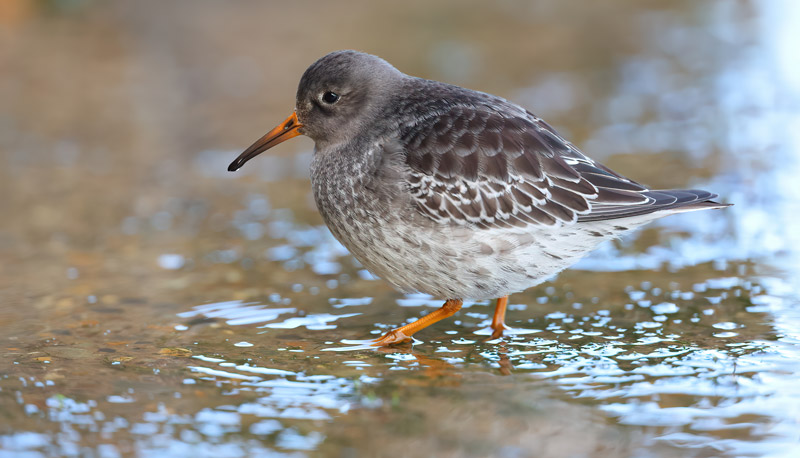Published recently, the latest assessment of the status of all 220 species of bird that regularly occur in Wales – Birds of Conservation Concern 4 – shows that 60 species are now of ‘highest conservation concern’ and have been placed on the assessment’s Red List.
The newly revised Welsh Red List now includes familiar bird species such as the Swift, Greenfinch and Rook, that have been added for the first time.
The report – published by a coalition of Wales’ leading bird conservation and monitoring organisations – places 60 species on the Red List, 91 on the Amber List and 69 on the Green List. Worryingly, the Red List now accounts for more than one-quarter (27%) of Welsh species, more than ever before.
Most of the species were placed on the Red List because of severe declines, having halved in numbers or range in Wales in recent decades. Others remain well below historical levels or are under threat of global extinction. Since the previous assessment, Corn Bunting and Corncrake have been declared extinct as breeding birds in Wales.
A number of species have jumped straight from Green to Red. The rapid decline in numbers of breeding Rooks and of wintering Purple Sandpipers in Wales, and the deteriorating global status of Leach’s Petrel, means that they have jumped from Green to Red since the 2016 assessment.

Purple Sandpiper, copyright Glyn Sellors, from the surfbirds galleries
Another concern found in the report is the placing of Swifts on the Red List and House Martin on the Amber List for the first time. This could reflect the availability of nesting habitats and food for the species available food for them such as air-borne insects or conditions in wintering areas of these migrants.
Greenfinch, a once familiar garden bird, has moved from Amber to Red after a population crash (71% in Wales since 1995) caused by a severe outbreak of the disease Trichomonosis. This parasite-borne infection is also believed to be responsible for the ongoing decline of Chaffinch, which has been moved to the Amber List.
The future of many upland, grassland and wading birds such as Curlew, Redshank and Lapwing remains of major concern. Work commissioned by NRW suggests breeding Curlew could be on the verge of extinction in Wales in the next decade without urgent intervention, making it the most pressing bird conservation priority in Wales.
It is not all bad news and a beacon of hope has been the recovery of the Red Kite, which has made it to the Green List thanks to the efforts of people across Wales and more than a century of conservation work. Another species that has moved from Amber to Green is the Avocet, which has benefited from wetland restoration.
Julian Hughes, RSPB Cymru Head of Species, said:
“An increase in the number of species on the Red List shows that we are losing many of Wales’ most well-loved and familiar birds, underlining the seriousness of the nature emergency we face. As we approach COP15 of the UN’s Biodiversity Convention we are looking to leaders to commit to delivering an ambitious new global agreement for nature. We can’t lose more time, and the Welsh Government’s promise to introduce legally binding nature recovery targets for Wales must be delivered quickly to ensure all departments, and all sectors play their part in Wales becoming Nature Positive by 2030.”
Patrick Lindley, NRW Senior Ornithologist, said:
“Results from the fourth assessment of Birds of Conservation Concern provide us with an understanding of the health of birds in Wales. Worryingly, more than a quarter of the birds assessed are now showing signs of statistically significant decline and are Red-listed in Wales.
Farmed habitat species remain in serious trouble in Wales, and include Starling, Tree Sparrow, Yellow Wagtail and Yellowhammer, all of which remain Red-listed and are now absent as breeding birds from large parts of Wales. The status of several upland songbirds has also deteriorated significantly, including widespread species such as Meadow Pipit which now joins the Red List. This fourth assessment demonstrates the importance of long-term monitoring and the participation of volunteers collecting such information.”
Anne Brenchley, WOS Chairperson, said:
“Whilst it is not surprising that this latest assessment of the status of our Welsh birds continues to show that species particularly associated with woodland and farmland are still in trouble there are some far more worrying trends. Who would have thought that familiar and widespread birds such as Goldcrest, Greenfinch, Meadow Pipit, Rook and Swift would now be on the Red List? These changes make it even more important that many of the Welsh birdwatchers, that the Welsh Ornithological Society represents, should engage in survey, monitoring and recording projects that might help us understand why these species are no longer an everyday sight.”
Dawn Balmer, BTO Head of Surveys, said:
“Thank you to the hundreds of volunteers who take part in surveys and count birds throughout the year. The data they collect is pivotal for long-term assessments like this one, which reveal so much about the changing fortunes of birds in Wales.”